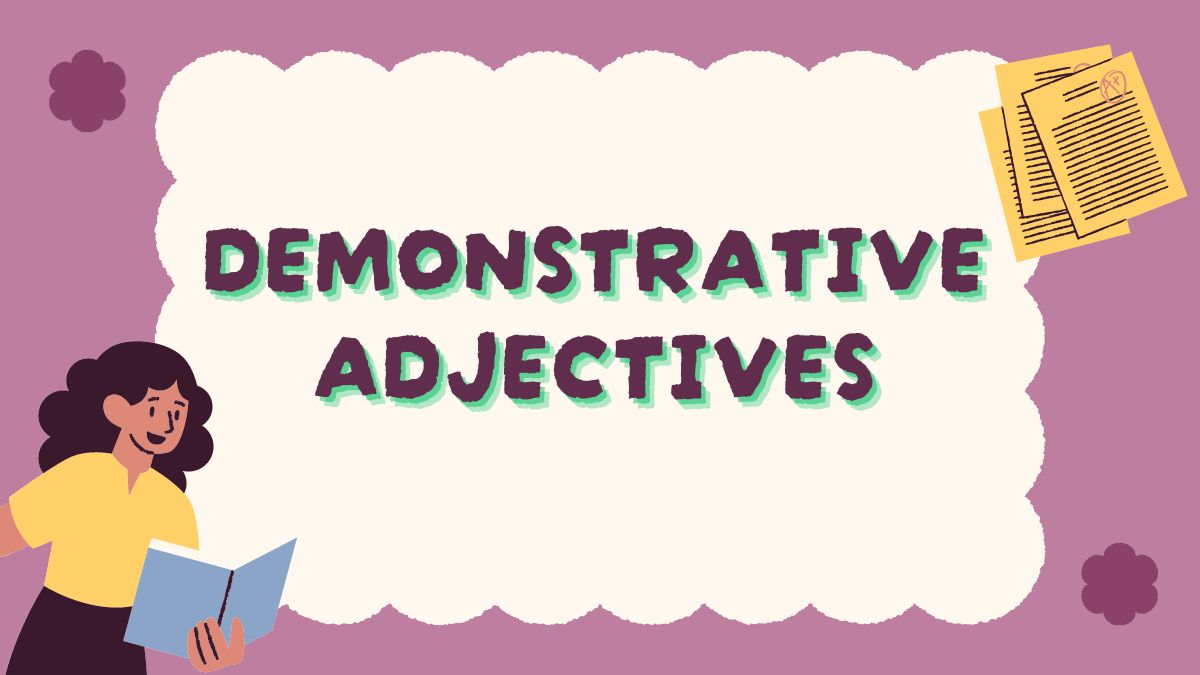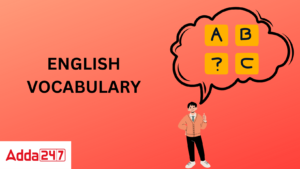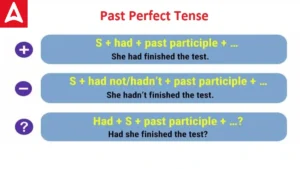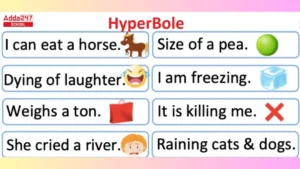Adjectives are very helpful in defining the qualities of a noun and pronoun. These grammar soldiers help to modify the subject (a noun or a pronoun) in a sentence. The adjectives are of different types and one such type is the demonstrative adjective. You must have used these adjectives in your daily life quite often to describe things without knowing its type. In this article, we are providing you with a detailed explanation of Demonstrative Adjectives.
Demonstrative Adjectives
You must have learned about the demonstrative pronouns earlier that is used to point to specific things or people. The demonstrative adjectives work in a similar way. A demonstrative adjective, as its name indicates, is an adjective that describes the specific position of something or someone, that is, it is used to specifically describe the position of a person or thing. Check the definition, examples, rules and exercise on demonstrative adjectives here.
Demonstrative Adjectives Definition
The demonstrative adjective has been defined explicitly in various dictionaries of the English language. Check these definitions below.
A demonstrative adjective, according to the Oxford Learner’s Dictionary, is defined as a word that is “used to identify the person or thing that is being referred to”.
According to the Collins Dictionary, the word ‘demonstrative’ is defined as “a word or morpheme pointing out the one referred to and distinguishing it from others of the same class.”
Types of Demonstrative Adjective
The English Grammar has 4 primary types of demonstrative adjectives. These are: “this,” “that,” “these,” and “those.” The Demonstrative adjective gives information about the position or location of a noun or a pronoun. The selection of which demonstrative adjective is to be used in which case is based on both the number(singular or plural) and the relative distance (close or far) of the noun or pronoun it is describing.
Examples of Demonstrative Adjectives
As we know in English language, the words ‘this’, ‘that’, ‘these’, and ‘those’ function as demonstrative adjectives. Some of the examples of the demonstrative adjective in sentence usage is given hereunder.
- This hospital was where I was born.
- This day has been great! (This indicates a day close to the present moment, i.e. the current day.)
- I am not in a situation to lend you money at this moment.
- The ambience of this hotel is soothing.
- I remember that day like it was yesterday. (That indicates a day that occurred long before the current moment, possibly the distant past.)
- That boy was the one who won the first prize in the Inter-state singing competition.
- Can you send those packages to the store?
- Those hard years took a toll on him. (Those indicates that the years happened in the relatively distant past.)
- These next couple of Saturdays should be fun. (These indicates that the Saturdays will occur in the near future.)
Demonstrative Adjectives and Distances
Adjectives that demonstrate distance can be used in a number of situations. They can be used to describe the speaker or writer’s actual physical distance from them.
- “This” (singular) and “these” (plural) are used if something or someone is relatively close. So, they are also known as near (or proximal) demonstratives.
- “That” (singular) and “those” (plural) are used if something or someone are relatively far away. So, they are also known as far (or distal) demonstratives.
Demonstratives and Physical Distances
The demonstratives is used to describe the literal physical distances. Check the examples given below to understand this.
- I don’t like this book. Can I read that one you have instead?
- Are you sure you want to buy these silver earrings? What about those gold ones, over there?
Demonstratives and Nonliteral Distances
Demonstratives can be utilized to show a nonliteral or abstract distance, for example when talking about concepts or earlier remarks. When employed like this, the distinction in significance between proximal (“this/these”) and distal (“that/those”) demonstrative adjectives is frequently very slight. Check the following examples:
- That idea is bad. [An idea suggested by some person other than the writer or speaker]
- These questions are important to understanding the job forward. [Recent questions that have been posed]
Demonstratives and Temporal Distances
Demonstratives can also be used to indicate a difference in time; for example, “this” and “these” usually relate to the present or the near future, whereas “that” and “those” usually refer to a previous period of time.
- This year is going to be great. [The current year]
- People spend too much time on their phones these days. [Currently]
- That year was just terrible. [Some year in the past]
Difference Between Demonstrative Adjective and Demonstrative Pronoun
Let’s discover the distinctions between demonstrative adjectives and demonstrative pronouns.
| Demonstrative Adjective | Demonstrative Pronoun |
| Demonstrative adjectives are used to describe or specify an object. | Demonstrative pronouns, on the other hand, are employed in place of a noun. It indicates the person or thing performing or being acted upon in the sentence. |
| Adjectives like this, that, these, and those are examples of demonstrative adjectives. Their distinction from demonstrative pronouns is in their placement and purpose inside a sentence. | This, that, these and those are examples of the demonstrative pronouns |
| Eg: Can I take this suitcase to put in all my clothes?
Here, ‘this’ describes the suitcase. |
Eg: You can take this to put in all your belongings.
Here, ‘this’ is the demonstrative pronoun that takes place of the noun ‘suitcase’. |
Demonstrative Adjectives Usage Rules
It’s crucial to keep in mind that demonstrative adjectives are specifically used to modify nouns and pronouns, as they are a type of adjectives. When they are used, they must always come before the nouns they describe and occupy the first position in the order of adjectives.
- I want to hug that cute puppy. Correct
- I want to hug cute puppy that. Incorrect
- I want to hug cute that puppy. Incorrect
This and that are demonstrative adjectives that go with singular nouns and pronouns. These and those are demonstrative adjectives that are utilized with plural nouns and pronouns. In order to prevent grammatical mistakes, ensure to determine if the noun or pronoun is singular or plural, to correctly select the adjective.
- This story is interesting. (Story is a singular noun.)
- She wants to climb those walls. (Walls is a plural noun.)
- These bacteria are toxic to humans. (Despite appearances, bacteria is a plural noun and therefore must be paired with either these or those.)
One last caution: the words this, that, these, and those can also function as something other than adjectives. All of these terms have the potential to serve as demonstrative pronouns, while “that” can also function as an adverb or conjunction. If these words are not functioning as an adjective, then none of the previously mentioned rules or restrictions will be relevant. Understand this concern through the following examples:
- I am holding my toy box in my left hand. Out of all of my toys, this is my favorite. (This can function as the sentence’s subject on its own and is employed as a pronoun here.)
- It was a funny play. I just didn’t think it was that good. (That is employed as an adverb in order to change the adjective good.)
- Ryan is looking for the new hat that he bought at the store yesterday. (“That” has been employed as a conjunction here and has been used used to introduce a dependent clause.)
Demonstrative Adjectives Key Points
A representative for the corporation declared that there would be no product recall. Many customers interpreted this phrase to indicate that the manufacturer had confirmed the product’s safety. [This is how “this” is frequently used to refer to the sentence that comes right before it]
Because ordinals (“first”, “second”, “third”) are frequently employed to identify locations, whether literally (as in “My house is the second one on the left”) or figuratively (as in “Our first priority is safety”), some sources also define them as demonstrative adjectives.
Demonstrative Adjectives Practice Questions
In the following sentences, fill in the blanks with the best demonstrative adjective.
- _______ series we are watching now is really interesting.
- _______ house right there is the one we are planning to sell.
- Do you see ______ tree? There is an parrot’s nest on top of it.
- All __________ students who had scored 100 in English and Science last year were awarded with gold medals and cash prizes.
- ________ oranges on the table here are ripe. You can have them.
- _______ laptop you see here has not been working properly for a few weeks now. I guess I have to buy a new one.
- If you were given a choice, would you choose _______ ukulele here, or _______ sitar over there?
- Did you bring _______ book for me?
- What is the name of _________ house you were staying at last year?
- _________ building over there was constructed after our ancestral house was sold.
Answers:
- This series we are watching now is really interesting.
- That house right there is the one we are planning to sell.
- Do you see that tree? There is an parrot’s nest on top of it.
- All those students who had scored 100 in English and Science last year were awarded with gold medals and cash prizes.
- These oranges on the table here are ripe. You can have them.
- This laptop you see here has not been working properly for a few weeks now. I guess I have to buy a new one.
- If you were given a choice, would you choose this ukulele here, or that sitar over there?
- Did you bring this book for me?
- What is the name of that house you were staying at last year?
- That building over there was constructed after our ancestral house was sold.
| Related Articles | |
| Relative Pronouns | Interrogative Adjectives |
| Transitive and Intransitive Verbs | Possessive Adjectives |
| Adjectives | Compound Adjectives |











 Vocabulary Words with Meaning and Senten...
Vocabulary Words with Meaning and Senten...
 Past Perfect Tense: Definition, Formula,...
Past Perfect Tense: Definition, Formula,...
 Hyperbole- Explanation, Definition, Exam...
Hyperbole- Explanation, Definition, Exam...














